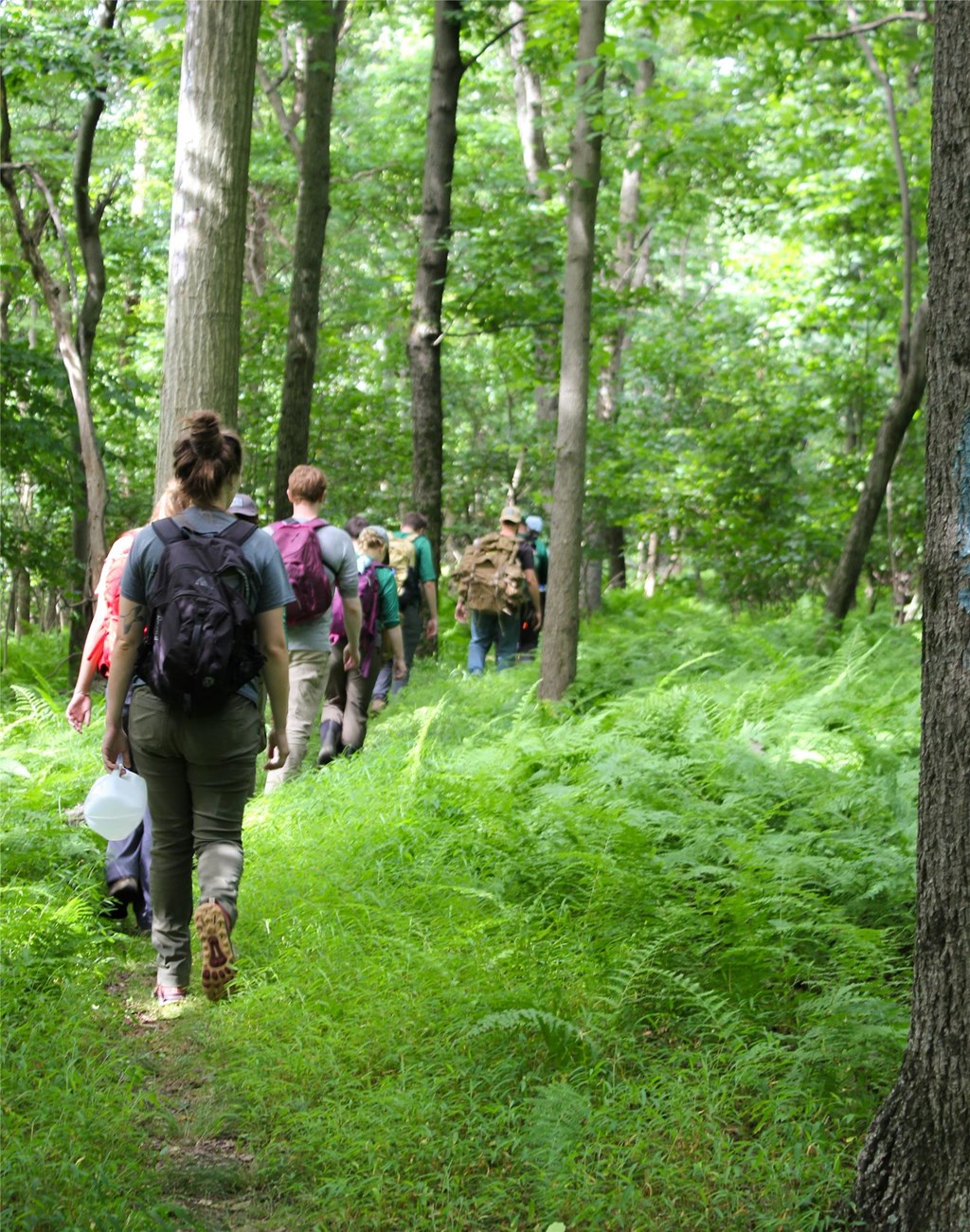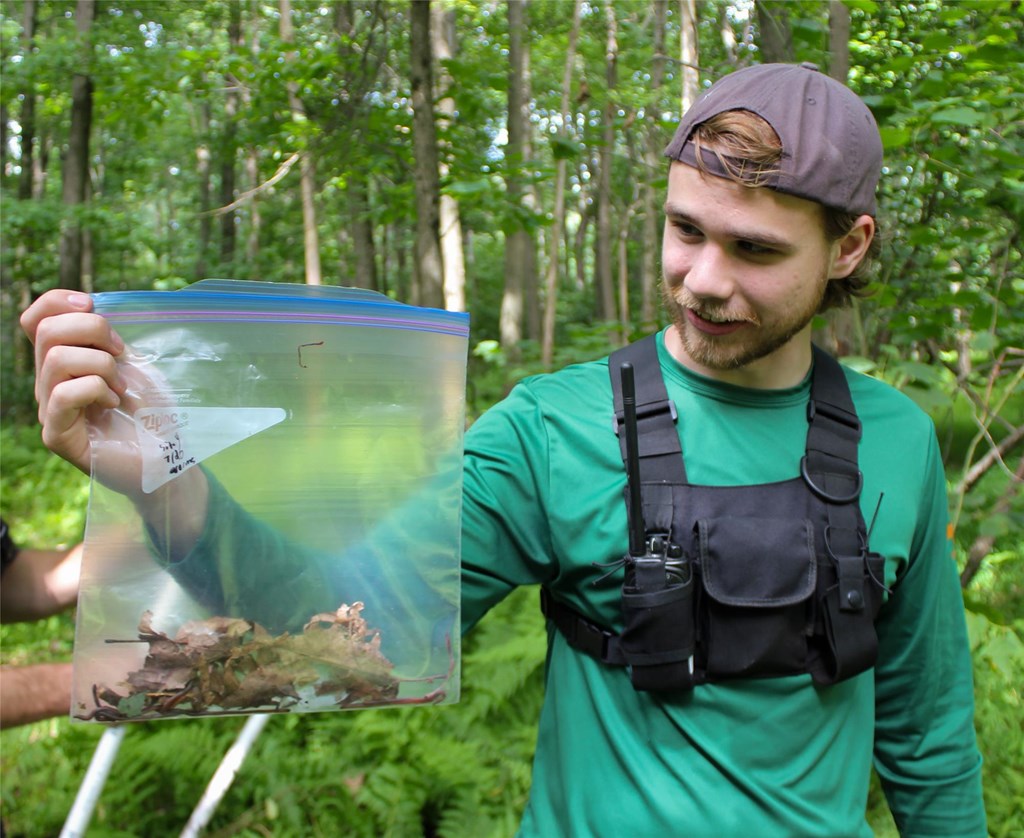Digging Into Invasive Research
Posted on in On the Mountain by Brent Beougher, HMS Assistant Steward

This summer was a very busy one for me at Hawk Mountain. From the time I joined the stewardship crew in June until I had to go back to school, I was working on a variety of projects that have hopefully helped Hawk Mountain in many ways. The majority of my time, though, was spent in invasive species management with the rest of the stewardship crew. Under Director of Stewardship Todd Bauman’s leadership, our crew worked to control the spread of various invasive plants: spraying herbicide on plants like smartweed and Japanese stilt grass, pulling Japanese barberry, and doing anything else we could to limit the spread of all invasive plants on the grounds. Coming into the summer, I had almost no experience with plant identification, but that changed very quickly. As I learned more plant species and about the plants in our natural environment, I felt that both as an individual and as part of the stewardship crew, I was able to make a difference in our efforts to contain invasive species that are negatively impacting our environment.
Once I had settled into my role in the stewardship crew, I was given several additional tasks to help Hawk Mountain. The first was to help Dr. Chris Sacchi from Kutztown University in plant surveys. With a small group, we went out to survey areas of the forest at Hawk Mountain and Weiser State Forest. To do this, we had eight 50x50 meter plots at Hawk Mountain and six at Weiser State Forest that were established prior to us going out. These plots were laid out all throughout the mountain at varying elevation levels, and they were intentionally paired up, with one plot in an area impacted by invasive species corresponding with a plot that was mostly not impacted by invasive plants. For our surveys, we would lay out a 5x30 meter area within the larger plot and count the species of trees and the life stage that each tree was at, dividing them into seedlings, saplings, and full-grown trees. Once the final list is compiled, the information we gathered will assist in understanding how invasive species are impacting tree populations in the area, and then this data can be used over time, if our efforts are repeated, to see how the populations are changing over time.

I also was asked to help lead a project to explore the effects of invasive plant populations on both soil chemistry and invasive earthworm populations. We started out by collecting soil samples in each of the plots from our surveys. We sent these to a lab at Penn State for an analysis to determine if there were any differences between our invasive-impacted plots and our nonimpacted plots. We followed this with an effort to estimate the comparative amounts of invasive earthworms throughout the Sanctuary. We did this by using a mustard powder and water mix in eight different randomly determined 1 m2 squares in each plot. We did this to see if there was a difference in the soil chemistry or number of earthworms in relation to invasive plant impact. From these, we found that the biggest differences in soil chemistry was in the amount of calcium in the soil, with the impacted sites having slightly less than the nonimpacted sites, and also in the amount of organic matter in the soil, with the nonimpacted sites having more organic matter than the nonimpacted ones. In terms of the worm project, we found several more earthworms on average in the impacted sites as compared to the nonimpacted sites.
Overall, this summer was an incredible experience, and one that I feel as though I learned a lot from. All of the projects that I got to participate in over the summer really helped me to experience and see different parts of the world. Not only did I get to learn more about the invasive species around Hawk Mountain, but I also got to assist with finding out more about the changes that the environment is undergoing with these species. It was a great experience and one that I feel helped me to grow and learn much more about the world around me.